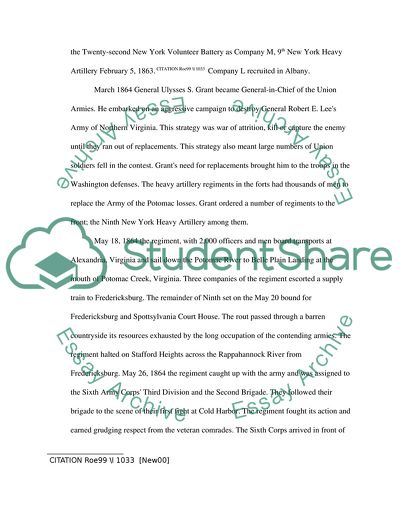Cite this document
(9Th New York Heavy Artillery in Battles of Monocacy and Cedar Creek Case Study, n.d.)
9Th New York Heavy Artillery in Battles of Monocacy and Cedar Creek Case Study. Retrieved from https://studentshare.org/history/1746876-research-project-9th-ny-heavy-artillery
9Th New York Heavy Artillery in Battles of Monocacy and Cedar Creek Case Study. Retrieved from https://studentshare.org/history/1746876-research-project-9th-ny-heavy-artillery
(9Th New York Heavy Artillery in Battles of Monocacy and Cedar Creek Case Study)
9Th New York Heavy Artillery in Battles of Monocacy and Cedar Creek Case Study. https://studentshare.org/history/1746876-research-project-9th-ny-heavy-artillery.
9Th New York Heavy Artillery in Battles of Monocacy and Cedar Creek Case Study. https://studentshare.org/history/1746876-research-project-9th-ny-heavy-artillery.
“9Th New York Heavy Artillery in Battles of Monocacy and Cedar Creek Case Study”. https://studentshare.org/history/1746876-research-project-9th-ny-heavy-artillery.


